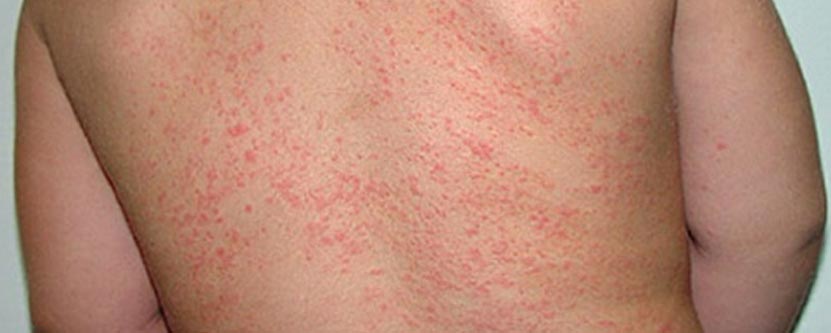An itchy child with a rash, usually around the neck areas and armpits is a very common scenario in India.
[the_ad id=”6114″]
More often than not, this is prickly heat “miliaria” which your child is affected with. Don’t start dumping powder all over your child’s body as it may do more harm than good. They can trouble you not only in summer but also in cooler seasons due to wearing of too many clothes. Newborn babies are often victims of excessive clothing.
How does prickly heat look like?
To start with they appear as tiny clear spots which look like sweat drops but are not itchy. After some time, they show the classical picture of “red bumpy rashes” which are extremely itchy. If they get infected, they become yellow colored filled with pus and may become painful on touch, less itchy and fever may start developing.
So, how to prevent them?
Follow a simple principle “Keep the external skin surface cool and dry”
- Bathing twice daily followed by drying. Don’t worry that your child will catch cold
- Wet sponging whenever possible followed by drying
- Wear loose cotton clothes
- Use fans and air conditioners for cooling. They are safe for newborn babies as well
- Don’t dab your child with antiperspirant powder. They further block the sweat pores and deposit in your child’s lungs
- Avoid oil-based products which will block the sweat glands
- Give your child plenty of liquids orally
How to treat prickly heat?
Although most cases settle on their own, parents are advised not to take it lightly as prickly heat is a marker that your child is getting is over heated. They may get dehydrated or suffer from heat stress or heat stroke.
- Give bath twice daily
- Intermittent wet sponging
- Antihistamines to decrease itching
- Calamine lotion to relieve the irritation
- Mild steroid ointments for severe itching
When do you need to visit a pediatrician ?
- If you think that this is not prickly heat but something else
- If rashes don’t go within a week
- If rashes are itching severely or become pus filled
- If any other symptoms develop like poor feeding, fever, etc…
Source:

